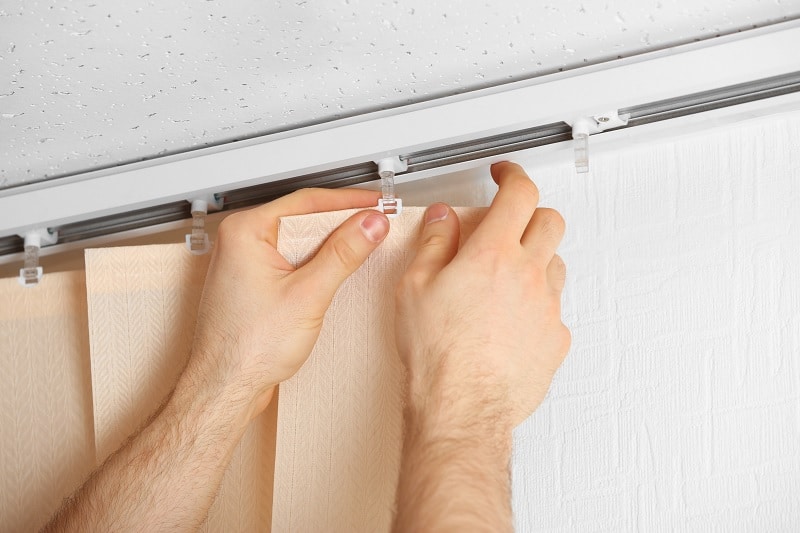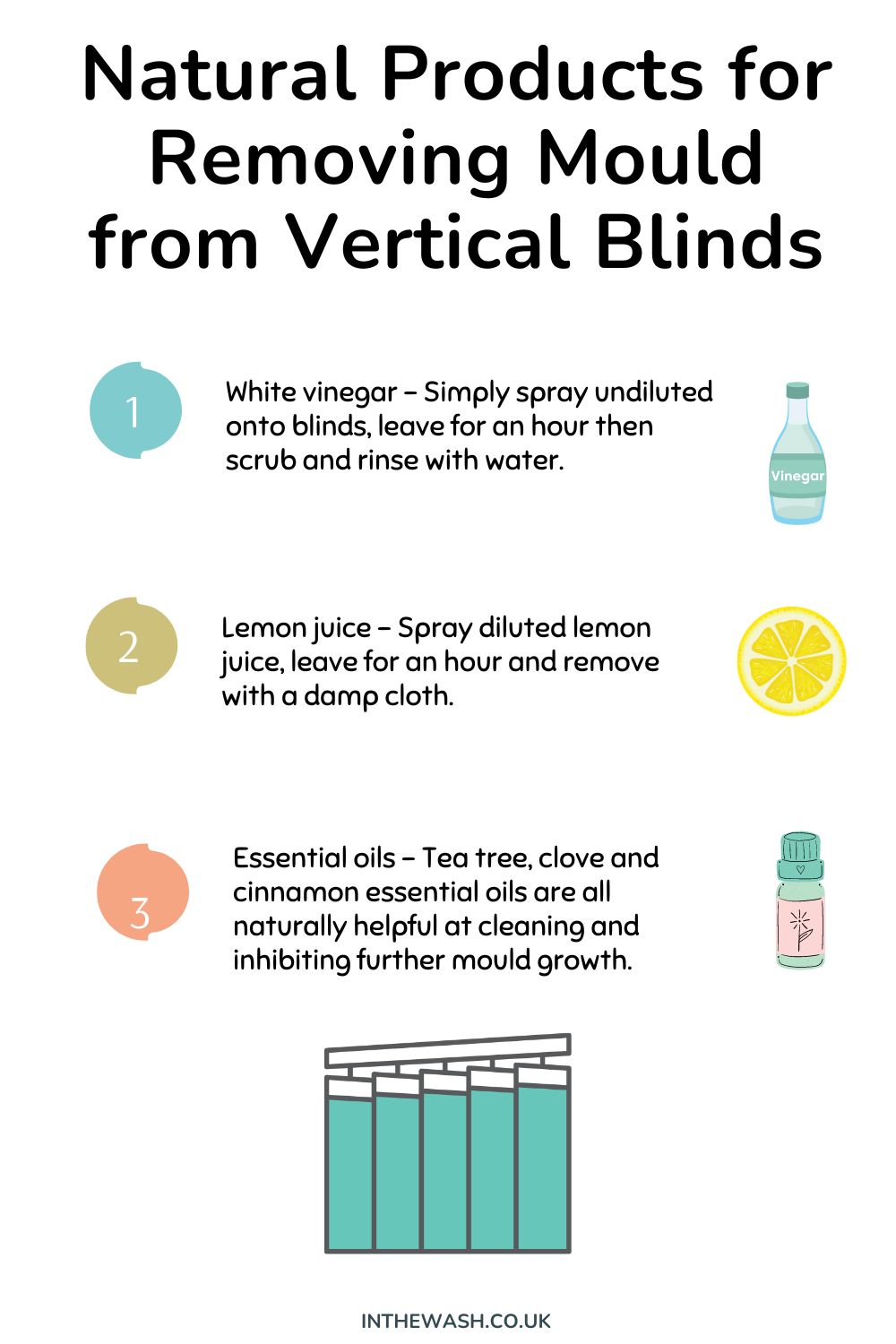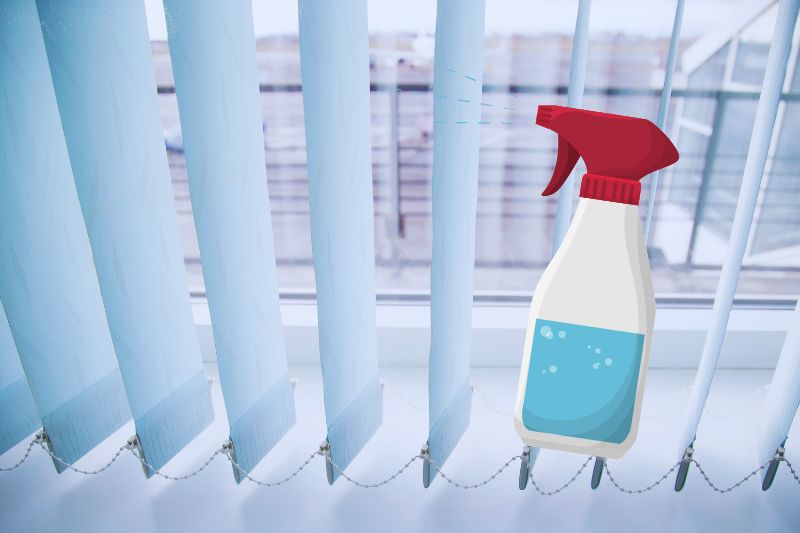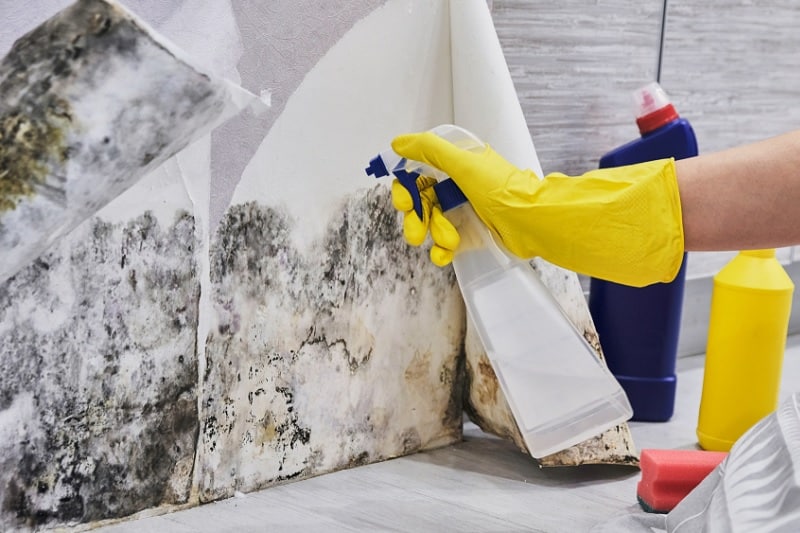Vertical blinds provide privacy in the home when required, and allow homeowners to control the amount of natural sunlight entering a room.
Vertical blinds look pretty and attractive when first fitted, but they are often prone to mould and unsightly mildew stains when exposed to heat and moisture.
Vertical blinds can be notoriously difficult to clean, and many people take down their fabric blinds and take them to a dry cleaner.
However, it is actually possible to get them looking like new again at home, whether you have wooden, plastic or fabric blinds.
How to Clean Mould Off Vertical Blinds
Method 1 – Cleaning vertical blinds without removing them
When it comes to the regular cleaning of your vertical blinds, you can actually leave them hanging up and follow the steps below:
- Loosen dirt
The first step for removing mould is to use a thick duster to remove any loose dirt. You may prefer to open a window and wear a dust mask to prevent breathing in any airborne mould whilst performing this task. - Remove dirt with a vacuum cleaner
Next, use the upholstery or brush attachment on your vacuum cleaner to remove mould and dirt from hard to reach areas. - Clean with water and detergent
Embedded mould can only be fully removed from a blind by cleaning with water mixed with detergent or a natural cleaning product. There are several ways to do this, which are explained below.

Method 2 – Machine washing
Many fabric vertical blinds can be machine washed. Always check the washing instructions on the label first, and it’s a good idea to use a gentle wash cycle at a low temperature, such as your machine’s wool or delicates wash.
Machine washing your blind exposes the material to snagging and fraying, so if you do decide to wash your vertical blind in the washing machine, it’s best to roll the blind louvres together, making sure there are no creases and the edges are in line, then tie the roll together and place inside a pillowcase before washing.
It’s also a good idea to miss out the final spin of the washing cycle.
Method 3 – Manual cleaning
Many people prefer to wash their blinds by hand, and even though this may take longer, it’s less likely to damage the blind.
You can wipe each slat individually with a cloth soaked in a mixture of water and cleaning detergent, or remove the whole blind and either clean outside, or soak for a few hours in a bath filled with diluted cleaning detergent and warm water.
It’s worth noting that even washing by hand can damage and shrink blind fabric if the water is too hot.
It is recommended that you take your blinds down and carry out the cleaning outdoors, preferably on a sunny day to aid with drying afterwards.
Drying blinds after cleaning them
Air drying is always the safest method for drying a blind, preferably with the blind laid out flat. However, if you live in a small space or have nowhere to lay the blinds out flat, you could dry them with a towel and then hang them back up with the window open to help them to completely dry. Never attempt to tumble dry your blind.
Cleaning Products for Vertical Blinds
In the past, it was recommended that bleach was used to remove mould from blinds, and there are many bleach-based products that can be used for this purpose. However, many of us now prefer more natural cleaning solutions that are safer and kinder to the environment.
1. White vinegar
White vinegar is one of the cheapest natural products that will remove mould. Simply spray undiluted onto blinds, leave for an hour then scrub and rinse with water.
2. Lemon juice
Lemon is also extremely effective for removing mildew from fabric blinds. This is a particularly useful method if you are cleaning your blinds outdoors, as the lemon juice works with sunlight to kill mildew spores.
Simply spray (recipe below), leave for an hour and remove with a damp cloth.
To create your own lemon spray cleaner, you could use the following method. You will need:
- A clean jar
- A clean spray bottle
- Peel from 3/4 lemons (you could use a mix of lemon and lime)
- White vinegar
- Water
- Lemon essence (optional)
The first part of the creation of your citrus cleaning spray does involve a little time, so make sure you knock this recipe up at least a week in advance to washing your blinds.
- Place the peel from your lemons (and limes if you like) into the jar.
- Fill the jar with white vinegar almost to the top.
- Leave this to infuse for at least a week.
- Once this is done, you will want to strain out the peel and place the liquid only into your spray bottle.
- Add water to fill up the bottle and add your (optional) lemon essence.
- Add the spray bottle lid and give the bottle a little swirl before using the spray.
3. Essential oils
Several essential oils are also excellent for removing mould and mildew. Tea tree, clove and cinnamon essential oils are all naturally helpful at cleaning and inhibiting further mould growth.
Mix a few drops of your chosen oils with water in a spray bottle, spray directly onto the mould or mildew and remove with a damp cloth.
If you have coloured blinds or they are made from natural materials (such as woven bamboo), do be careful with your choice of detergent. We would say to avoid bleach or bleach-based cleaners entirely, otherwise, you could end up ruining your vertical blinds.


In The Wash is your guide to the best laundry and cleaning products, tips and tricks. Our mission is to solve the UK’s cleaning and laundry dilemmas!






